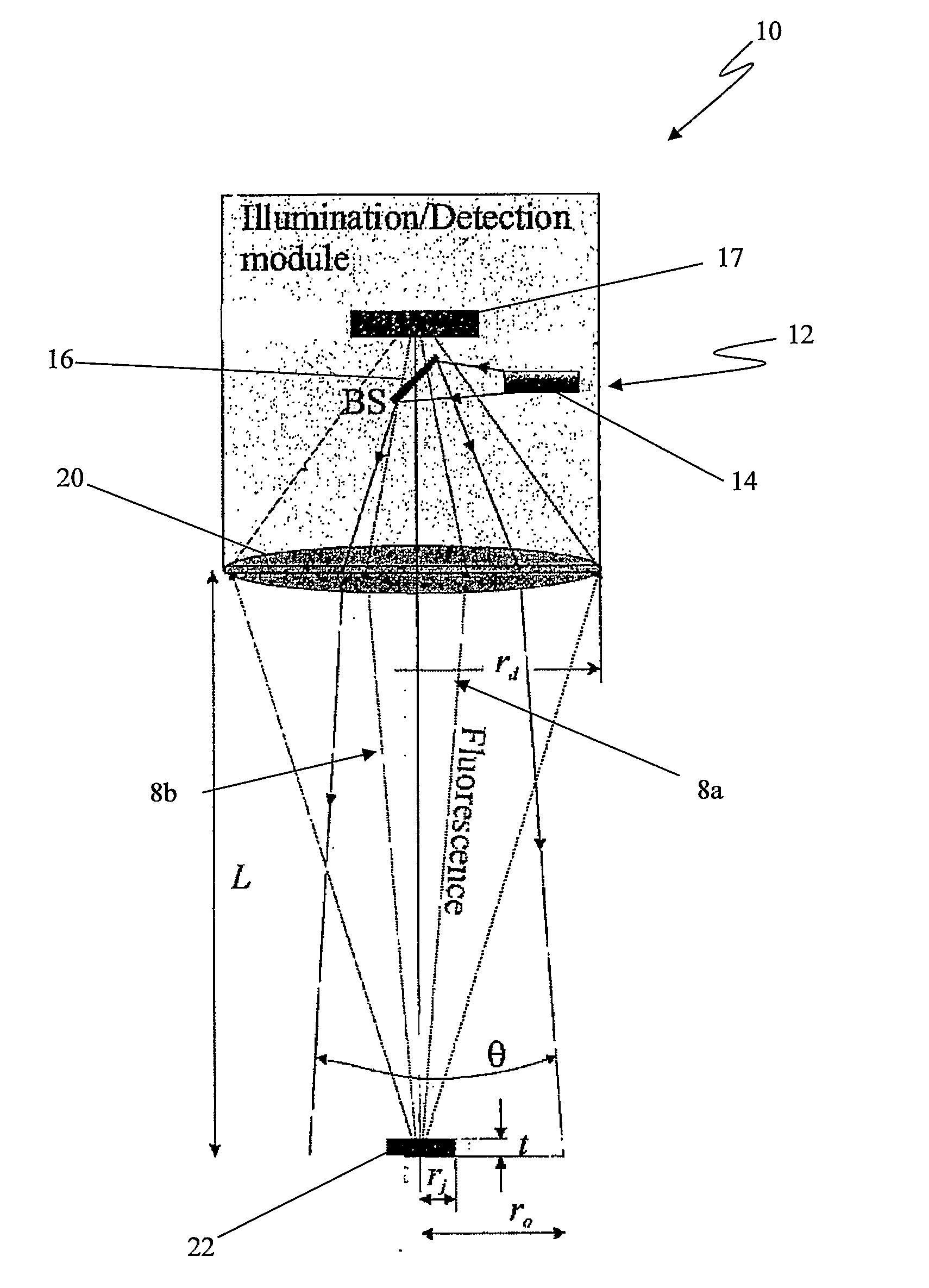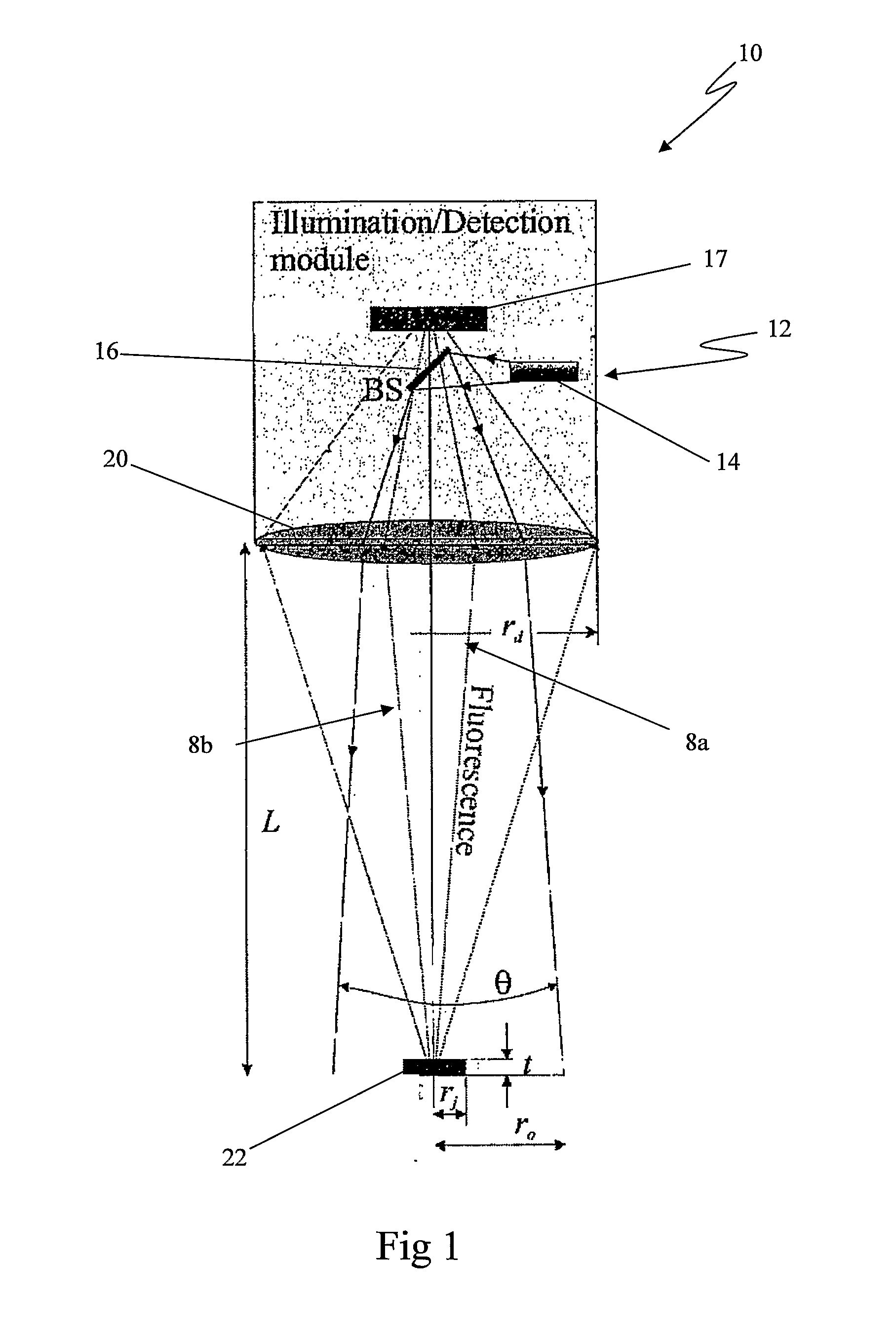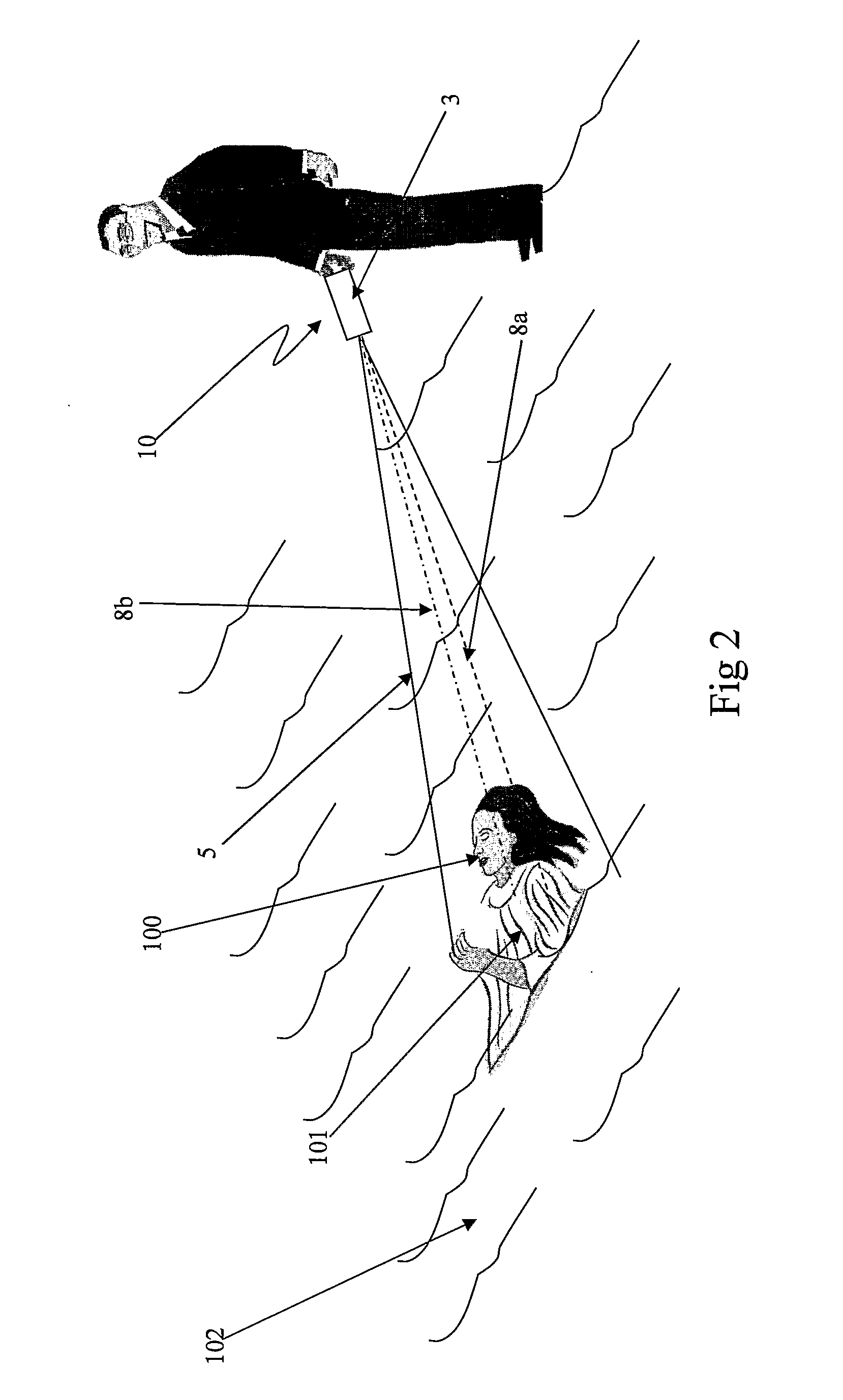System and Method for Locating One or More Persons
a system and method technology, applied in the field of system and method for locating one or more subjects, can solve the problems of difficulty in locating missing persons, difficulty in locating lost snow skiers, and difficulty in pin-pointing the location of desired targets, so as to reduce the potential for false activation of indicators, enhance the reliability of devices, and improve the effect of signal to noise ratio
- Summary
- Abstract
- Description
- Claims
- Application Information
AI Technical Summary
Benefits of technology
Problems solved by technology
Method used
Image
Examples
Embodiment Construction
[0062]With reference to FIG. 1 there is illustrated one possible configuration of the location apparatus according to an embodiment of the present invention. The apparatus 10 generally includes an illumination / detection module 12. The illumination section module 12 contains a source in this case a high-power laser 14 capable of radiating light at a wavelength in the infrared portion of the em spectrum. The optical output of the laser 14 is directed by beam-splitter (BS) 16 and lens 20 towards the rescue scene and the absorbers associated with the subject 22.
[0063]With the configuration as shown in FIG. 1 the whole scene can be illuminated at once and as such is termed full-field illumination. Alternatively, it can be illuminated in scanning manner, i.e. rastering a conditioned laser beam across the sea surface by using two scanning mirrors. In both cases the total view of the search area is assumed equal.
[0064]The detection section of module 12 is designed to collect fluorescent rad...
PUM
| Property | Measurement | Unit |
|---|---|---|
| angle | aaaaa | aaaaa |
| angle | aaaaa | aaaaa |
| time | aaaaa | aaaaa |
Abstract
Description
Claims
Application Information
 Login to View More
Login to View More - R&D
- Intellectual Property
- Life Sciences
- Materials
- Tech Scout
- Unparalleled Data Quality
- Higher Quality Content
- 60% Fewer Hallucinations
Browse by: Latest US Patents, China's latest patents, Technical Efficacy Thesaurus, Application Domain, Technology Topic, Popular Technical Reports.
© 2025 PatSnap. All rights reserved.Legal|Privacy policy|Modern Slavery Act Transparency Statement|Sitemap|About US| Contact US: help@patsnap.com



